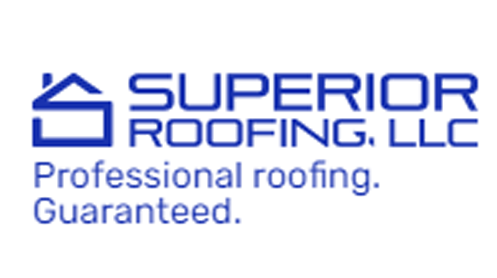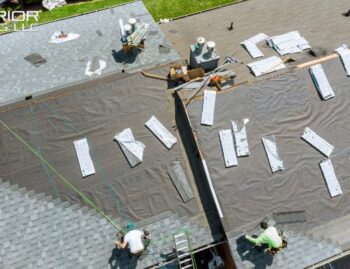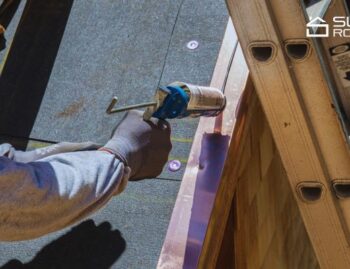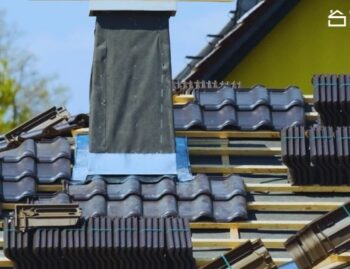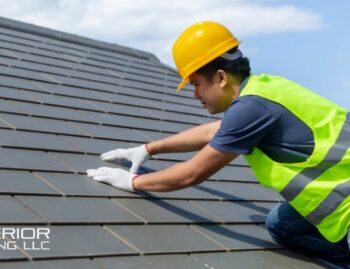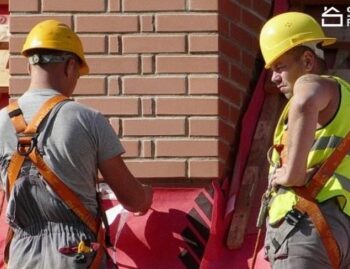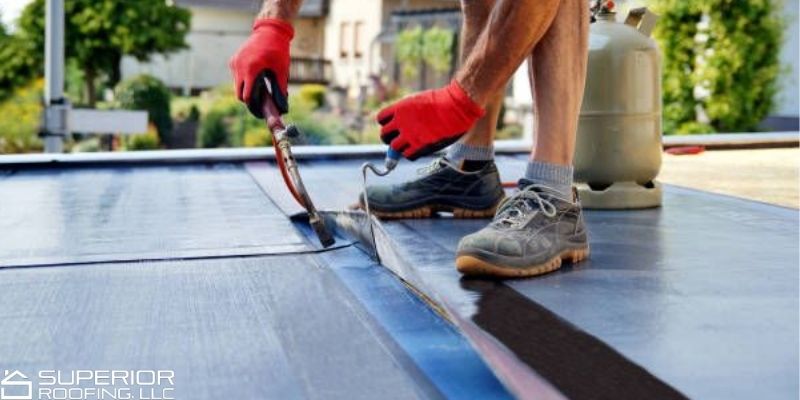
Welcome to the ultimate battle between two exceptional roofing options: flat roofs vs cedar roofs. In the quest for supremacy in Brentwood TN, these contenders will battle it out to determine the best roof type choice for your residential and commercial property. In one corner, we have sleek and modern flat roofs, offering contemporary appeal. And in the other corner, we have the timeless and natural beauty of cedar roofs, providing classic charm that's hard to resist. But which option will emerge victorious?
Let's delve into the world of roofing and explore the unique features and benefits of each contender, empowering you to make an informed decision tailored to your specific needs in Brentwood TN.
Flat Roofs vs. Cedar Roofs: A Battle of Style and Function
Let's take a closer look at flat roofs. These roofs are renowned for their stylish and versatile nature, designed to enhance the modern aesthetics of your property. With clean lines and minimalist appeal, flat roofs seamlessly blend with various architectural styles, from sleek and contemporary to industrial and urban. But their appeal extends beyond looks alone! Flat roofs boast exceptional durability and are built to withstand harsh weather conditions, making them an ideal choice for Brentwood TN’s ever-changing climate. Additionally, they offer ample space for rooftop installations like solar panels, rooftop gardens, or outdoor lounges, adding an extra layer of functionality to your property.
Now, let's shift our focus to the undeniable charm of cedar roofs. These roofs exude warmth, character, and natural beauty, instantly elevating the curb appeal of any home. Crafted from sustainable cedar wood, they not only provide exceptional insulation but also contribute to a greener environment. Cedar's unique properties, such as natural resistance to decay and insects, ensure your roof remains robust and reliable for years to come. Moreover, the natural oils within cedar repel moisture, keeping your home cozy and dry even during the rainiest of days.
Flat Roofs: Embracing Modern Minimalism
Flat roofs have gained popularity in contemporary architecture due to their sleek and minimalist aesthetic. Rather than having a pitched slope, flat roofs are almost entirely level, creating a clean and streamlined appearance. Let's explore the key aspects and considerations of flat roofs.
- Construction and Design
Flat roofs have a horizontal or nearly horizontal surface, usually covered with a waterproof membrane. They are often constructed using materials like built-up roofing (BUR), modified bitumen, or single-ply membranes such as EPDM or TPO. The lack of slope in a flat roof requires careful waterproofing and proper drainage to prevent water accumulation and potential leaks.
- Space Utilization
One of the major advantages of a flat roof is its usability as an additional outdoor space. Flat roofs can be transformed into functional rooftop gardens, patios, or even recreational areas, expanding your living space and providing a unique vantage point.
- Energy Efficiency
Flat roofs offer excellent opportunities for energy-efficient solutions. Installing solar panels or a green roof (a roof covered with vegetation) on a flat surface can help you generate clean energy or enhance thermal insulation, potentially reducing your energy bills.
Cedar Roofs: Timeless Beauty and Natural Appeal
Cedar roofs exude natural elegance and have been a popular choice for centuries. Made from high-quality cedar shingles or shakes, they bring warmth and charm to any home. Let's explore the distinctive features and considerations of cedar roofs.
- Aesthetic Appeal
Cedar roofs boast a unique and timeless beauty that complements a wide range of architectural styles. The warm, earthy tones and natural textures of cedar shingles create an inviting and picturesque look, enhancing the overall curb appeal of your home.
- Durability and Insulation
Cedar wood is renowned for its durability and natural resistance to rot, insects, and extreme weather conditions. Properly installed and maintained cedar roofs can last for decades, providing reliable protection and insulation for your home.
- Environmental Considerations
Cedar is a renewable resource, making it an eco-friendly roofing option. It is biodegradable and requires less energy to manufacture compared to synthetic roofing materials. Additionally, cedar's natural insulating properties can contribute to energy efficiency by reducing heating and cooling needs.
Factors to Consider When Choosing Between Flat Roofs vs Cedar Roofs
Selecting between flat roofs vs cedar roofs involves weighing various factors based on your preferences, climate, and budget. Here are a few points to consider when making your decision:
- Climate and Location
Consider your local climate and weather patterns. Flat roofs may require more maintenance in areas with heavy rainfall or snow accumulation, while cedar roofs might be better suited for regions with moderate climates.
- Maintenance and Longevity
Both flat roofs and cedar roofs require regular maintenance to ensure their longevity. Assess your willingness to invest time and effort into upkeep and make a decision accordingly.
- Architectural Style
The architectural style of your home plays a crucial role in the overall aesthetic. Determine whether a modern, minimalistic look or a traditional, rustic charm better aligns with your vision.
The choice between flat roofs vs cedar roofs ultimately boils down to personal preferences, architectural style, and regional considerations. Flat roofs offer a contemporary and versatile design, with the potential for extra living space and energy-efficient features. On the other hand, cedar roofs bring timeless beauty, natural appeal, and environmental sustainability to your home.
By carefully evaluating the benefits and drawbacks of each roofing type, you can make an informed decision that not only enhances the functionality and protection of your home but also aligns with your unique sense of style.
Consulting with a professional roofing contractor in Brentwood TN is always recommended to ensure you select the most suitable roofing option that meets your specific requirements.
Pros and Cons Unveiled: Flat Roofs vs Cedar Roofs in Brentwood, TN
Choosing the right roofing system for your home in beautiful Brentwood TN, is an important decision that balances aesthetics, durability, and practicality. In this informative comparison, we delve into the captivating world of flat roofs vs cedar roofs, exploring their respective advantages and drawbacks to help you make an informed choice that suits your unique needs.
Pros of Flat Roofs:
- Affordability: Flat roofs tend to be more cost-effective compared to other roofing types, including cedar roofs. The installation and maintenance costs are generally lower due to the simpler design and construction process.
- Easy Maintenance: Flat roofs are easier to access and inspect, making maintenance tasks such as cleaning gutters, removing debris, and conducting repairs more convenient.
- Utilization of Space: With a flat roof, you can create a usable outdoor space, such as a rooftop garden or a patio. This can add value to your property and provide additional functional areas for relaxation or entertaining guests.
- Energy Efficiency: Flat roofs offer the possibility of installing energy-efficient materials, such as solar panels or a green roof system, helping you reduce your carbon footprint and potentially save on energy costs.
Cons of Flat Roofs:
- Limited Drainage: The main disadvantage of flat roofs is the potential for poor drainage. Without a slope to facilitate water runoff, flat roofs are prone to water pooling, which can lead to leaks and other water-related issues if not properly designed and maintained.
- Durability: Flat roofs may not be as durable as sloped roofs, particularly in areas with extreme weather conditions. Factors such as heavy snow, ice, or hail can put additional stress on a flat roof, increasing the risk of damage.
- Lack of Aesthetic Appeal: Some homeowners prefer the traditional look of sloped roofs, and flat roofs may not provide the same visual appeal. However, with the right architectural design and proper finishing materials, flat roofs can still complement the overall aesthetic of a home.
Pros of Cedar Roofs:
- Natural Beauty: Cedar roofs are known for their natural beauty and rustic charm. They can enhance the visual appeal of a home, giving it a unique and timeless appearance.
- Insulation Properties: Cedar has excellent insulating properties, providing better thermal regulation compared to other roofing materials. This can help maintain a comfortable temperature inside your home and potentially reduce energy consumption.
- Longevity: Cedar roofs, when properly installed and maintained, can have a long lifespan. With regular inspections and treatments, they can withstand the elements for several decades, making them a durable and sustainable roofing choice.
- Environmental Sustainability: Cedar is a renewable resource, and its production has a lower environmental impact compared to synthetic roofing materials. Choosing a cedar roof can contribute to sustainable building practices.
Cons of Cedar Roofs:
- Higher Cost: Cedar roofs tend to be more expensive upfront compared to flat roofs and other roofing options. The quality and durability of cedar justify the higher cost, but it may not fit every budget.
- Maintenance Requirements: Cedar roofs require regular maintenance, including inspections, cleaning, and treatments to prevent issues such as moss growth, rot, and insect infestations. Failure to maintain a cedar roof properly can lead to premature deterioration.
- Fire Risk: Cedar is a combustible material, which means it can pose a higher fire risk compared to non-combustible roofing materials. However, proper fire-resistant treatments can significantly reduce this risk.
Choosing between flat roofs vs cedar roofs in Brentwood, TN involves considering various factors, including budget, aesthetics, durability, and maintenance requirements. While flat roofs offer affordability and easy maintenance, cedar roofs provide natural beauty, insulation, and longevity. Assess your priorities, consult with roofing professionals, and make an informed decision based on your specific needs and preferences. Remember, whichever option you choose, proper installation and regular maintenance are key to ensuring the longevity and functionality of your roof.
Exploring the Installation Process of Flat Roofs Vs. Cedar Roofs
Let’s l delve into the installation processes of flat roofs vs cedar roofs, shedding light on their distinctive features, pros, and cons. Whether you're looking for durability, aesthetic appeal, or cost-effectiveness, understanding these installation processes will help you make an informed decision that suits your needs.
- Flat Roofs:
Flat roofs have gained significant popularity in recent years due to their modern and minimalist appearance. They are often chosen for commercial buildings but can also be a great option for residential properties. Here's a glimpse into the installation process:
a. Planning and Design:
- A thorough inspection of the existing structure is conducted to ensure it can support the weight of a flat roof.
- Precise measurements are taken to determine the required materials and dimensions.
b. Preparation:
- The existing roofing materials are removed, and any necessary repairs are made to the underlying structure.
- Insulation is installed to improve energy efficiency and prevent heat loss.
c. Waterproofing and Membrane Installation:
- A durable waterproofing layer, such as modified bitumen or EPDM rubber, is applied to protect against water damage.
- A membrane is then installed over the waterproofing layer, providing an extra barrier against leaks and weather elements.
d. Finishing Touches:
- The roof edges are carefully sealed with flashing to prevent water infiltration.
- Drainage systems, such as gutters and downspouts, are installed to ensure proper water runoff.
- Cedar Roofs
Cedar roofs offer a classic and natural aesthetic appeal that many homeowners find irresistible. While they require more maintenance than flat roofs, they can provide a timeless charm to any home. Let's take a closer look at their installation process:
a. Material Selection:
- Choosing the right type of cedar shingles or shakes is crucial, as they come in various styles and grades.
- Higher-grade cedar offers better durability and longevity, making it a worthwhile investment.
b. Roof Preparation:
- The existing roof is inspected for any structural issues or damage that may need repairs.
- Cedar roof installation often requires a solid plywood or oriented strand board (OSB) decking for proper installation.
c. Cedar Shingle or Shake Installation:
- Starter shingles or shakes are first installed at the eaves, ensuring proper overhang for water runoff.
- Each subsequent layer is then installed, interlocking with the previous layer to provide a secure and weather-resistant finish.
d. Preservative and Finishing:
- Cedar roofs require preservative treatments to enhance their resistance to weathering, decay, and insect damage.
- The roof is then carefully inspected for any loose shingles or shakes that are secured or replaced.
Choosing between a flat roof vs a cedar roof involves weighing the benefits and considerations of each option. Flat roofs offer a sleek and contemporary appearance, along with low maintenance requirements. On the other hand, cedar roofs bring a timeless charm and natural beauty to your home, albeit with higher maintenance needs. Understanding the installation process of both roof types allows you to make an informed decision that aligns with your preferences, budget, and long-term goals.
Maintenance and Repair Considerations for Flat Roofs vs Cedar Roofs
When it comes to roofing options, two popular choices often come to mind: flat roofs and cedar roofs. Each has its own unique characteristics, advantages, and considerations when it comes to maintenance and repairs. In this blog post, we'll delve into the key factors to consider for both flat roofs and cedar roofs, helping you make an informed decision for your next roofing project.
Flat Roofs
1. Low Maintenance, High Durability:
Flat roofs, typically constructed with materials such as EPDM rubber or modified bitumen, are known for their low-maintenance nature. Due to their simple design, flat roofs require fewer repairs and inspections compared to sloped roofs. Their durability also makes them resistant to damage from extreme weather conditions.
2. Regular Inspections Are Essential:
Although flat roofs generally have fewer maintenance requirements, regular roof inspections are crucial to identify any potential issues early on. Look for signs of ponding water, cracks, blistering, or deterioration in the roofing material. Prompt repairs and maintenance can help prevent more significant problems down the line.
3. Professional Expertise is Vital:
While some minor repairs can be handled by homeowners, it is essential to hire a professional roofing contractor for more complex issues. They have the expertise, tools, and knowledge to perform thorough inspections and tackle any repairs effectively. Additionally, professionals can provide valuable guidance on preventive maintenance practices to extend the life of your flat roof.
Cedar Roofs
1. Natural Beauty and Longevity:
Cedar roofs offer an aesthetic appeal that adds charm and warmth to any home. Along with their visual appeal, cedar roofs are known for their durability and longevity, often lasting 30 to 50 years when properly maintained. This natural material is also environmentally friendly, as cedar is a renewable resource.
2. Regular Maintenance is Key:
To keep cedar roofs in optimal condition, regular roof maintenance is essential. This includes periodic inspections for loose or damaged shingles, moss or algae growth, and signs of rot. Cleaning the roof surface and treating it with preservatives can help prevent deterioration and prolong its lifespan.
3. Timely Repairs and Restoration:
When repairs are necessary, it's crucial to address them promptly. Damaged or missing shingles should be replaced, and any signs of rot or decay should be addressed immediately. In some cases, restoration techniques, such as power washing and reapplication of preservatives, may be necessary to maintain the roof's integrity.
Whether you're considering a flat roof or a cedar roof, understanding the maintenance and roof repair considerations for each option is vital. Flat roofs offer low-maintenance durability, while cedar roofs bring natural beauty and longevity. Regular inspections, professional expertise, and timely repairs are essential for both types of roofs to ensure their longevity and functionality. By carefully considering these factors, you can make an informed decision that aligns with your preferences, budget, and long-term goals for your home.
Remember, consulting with a professional roofing contractor is always advisable when it comes to assessing your specific roofing needs and determining the best course of action. Happy roofing!
Exploring Roofing Materials Beyond Flat Roofs vs Cedar Roofs
Two popular choices are flat roofs and cedar roofs, each offering distinct advantages and aesthetics. However, the world of roofing materials extends far beyond these two options. In this blog, we will explore a range of innovative and sustainable materials that can elevate your roofing experience. From modern flat roofing solutions to alternative options to cedar, we'll delve into the exciting possibilities available in the realm of roofing materials.
- Flat Roofs: Modern Solutions for Contemporary Architecture
Flat roofs have gained significant popularity in recent years due to their sleek, modern appearance and practical advantages. Although traditional flat roofs have faced issues such as poor drainage and leaks, advancements in technology have led to more reliable and durable solutions.
Here are a few noteworthy alternatives to consider:
a) EPDM (Ethylene Propylene Diene Monomer): This synthetic rubber roofing membrane offers exceptional resistance to weathering, UV radiation, and abrasion. EPDM roof is easy to install, low maintenance, and has a long lifespan, making it a cost-effective choice.
b) PVC (Polyvinyl Chloride): PVC roofing membranes provide excellent durability, energy efficiency, and resistance to chemicals and fire. They are also highly reflective, helping to reduce cooling costs in warm climates.
c) TPO (Thermoplastic Olefin): TPO roofs combine the benefits of EPDM and PVC, offering a cost-effective and eco-friendly roofing solution. TPO membranes have excellent heat resistance, durability, and reflectivity, making them ideal for energy-efficient buildings.
- Cedar Roofs: Embracing Sustainability and Natural Beauty
Cedar roofs have long been admired for their natural beauty and rustic charm. However, the environmental impact of using cedar as a roofing material has raised concerns in recent years.
If you're seeking alternatives that offer sustainability without compromising aesthetics, consider the following options:
a) Composite Cedar Shingles: These shingles mimic the appearance of natural cedar while offering superior durability and resistance to rot, insects, and fire. Composite cedar shingles are typically made from recycled materials, making them an eco-friendly choice.
b) Metal Roofing: Metal roofs have evolved beyond their utilitarian image and can now emulate the look of cedar shakes or shingles. They offer exceptional durability, energy efficiency, and longevity. Additionally, metal roofs are often made from recycled materials and are fully recyclable at the end of their lifespan.
c) Synthetic Slate: If you're drawn to the elegance of a cedar roof but prefer a more sustainable option, synthetic slate is worth considering. Made from a combination of recycled rubber and plastic, synthetic slate shingles provide the aesthetic appeal of natural slate while being lighter, more durable, and cost-effective.
Choosing the right roofing material involves considering factors such as durability, aesthetics, sustainability, and cost. While flat roofs and cedar roofs have their merits, exploring alternatives can broaden your horizons and lead to a more informed decision. From modern flat roofing solutions to sustainable options that mimic the beauty of cedar, there is a diverse range of materials available to suit your needs and preferences. By embracing innovation and sustainability, you can ensure your roof becomes a long-lasting, efficient, and visually pleasing asset for your home.
Which Roof is Best for Brentwood TN?
When deciding between flat roofs and cedar roofs in Brentwood, TN, homeowners must weigh the balance of style and function. Factors such as climate, aesthetics, cost, and longevity should be considered. Flat roofs offer a modern look but require regular maintenance and proper installation for drainage and waterproofing. Cedar roofs exude elegance and durability but demand routine maintenance to preserve their beauty and prevent issues like moss growth. Both roofs require professional installation, and maintenance is crucial to their longevity. Additionally, exploring other roofing materials beyond flat roofs and cedar roofs allows you to find options that best suit your preferences and needs.
Ultimately, the decision between flat roofs and cedar roofs in Brentwood TN boils down to personal preferences, architectural style, and budget considerations. It is recommended to consult with professional roofing contractors in Brentwood TN like Superior Roofing LLC who can provide expert guidance and assess the specific needs of your home. Whether you opt for the sleek and modern appeal of flat roofs or the rustic elegance of cedar roofs, rest assured that both choices can offer reliable protection and enhance the overall beauty of your home in this enchanting city.
